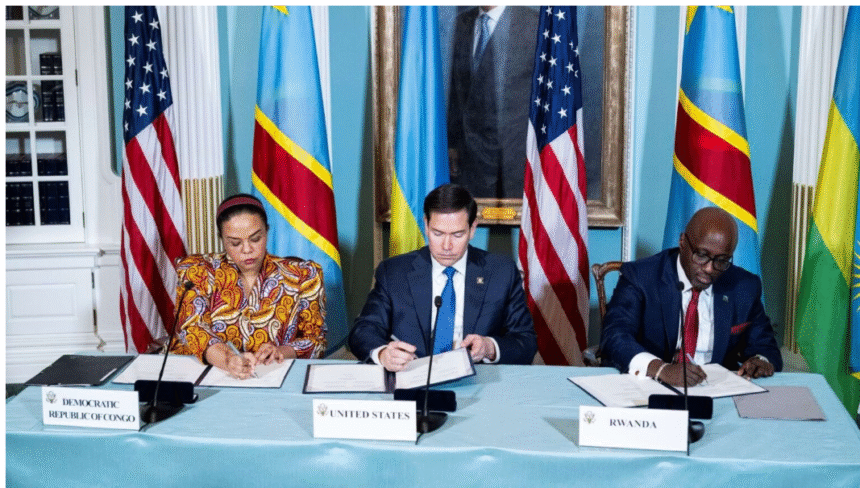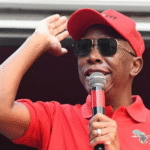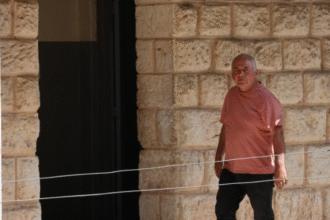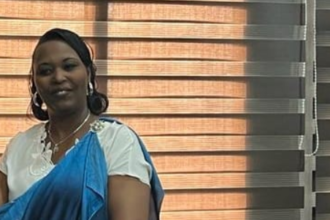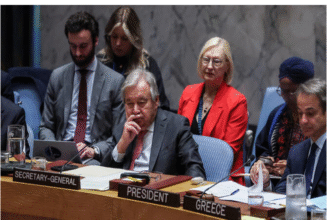By Emily Sims
Washington D.C. – In a significant step towards resolving decades of conflict, officials from Rwanda and the Democratic Republic of Congo (DRC) have reached a draft peace agreement. The breakthrough, mediated by the US and Qatar, proposes a framework for the “disengagement, disarmament, and conditional integration” of armed groups operating in eastern DRC.
The agreement, initialed on Wednesday after three days of constructive dialogue in Washington, aims to address the long-standing tensions and violence that have plagued the resource-rich region. A formal signing ceremony, witnessed by US Secretary of State Marco Rubio, is expected next Friday.
The US State Department hailed the agreement as a product of “constructive dialogue regarding political, security, and economic interests” between the two nations. The draft builds upon a previous accord signed in Washington in late April, where both countries committed to respecting each other’s sovereignty and formulating a peace plan.
The conflict escalated earlier this year when the M23 rebel group seized significant swathes of eastern DRC, leading to widespread displacement and loss of life. Rwanda has consistently denied accusations of supporting the M23, claiming its military presence in the region is a defensive measure against groups like the FDLR, a rebel group linked to the 1994 Rwandan genocide. Conversely, Rwanda accuses the Congolese government of backing the FDLR, a claim vehemently denied by the DRC.
The devastating consequences of the conflict are stark. Thousands have been killed, and hundreds of thousands of civilians have been forced from their homes. Notably, the M23’s capture of Goma and Bukavu led to the establishment of governing structures in the occupied regions.
The potential benefits of a lasting peace are substantial. The draft agreement could pave the way for billions of dollars of western investment in eastern DRC, a region rich in coltan and other critical minerals vital to the global electronics industry. Reportedly, the DRC government offered access to these resources in exchange for US support in resolving the conflict.
However, analysts remain cautious, highlighting several key questions that the draft agreement needs to address:
- M23 Withdrawal:┬ĀWill the M23 rebel group withdraw from the areas they currently occupy?
- Territorial Integrity:┬ĀDoes “respect for territorial integrity” imply that Rwanda acknowledges and will withdraw any troops present in eastern DRC?
- Refugee Return:┬ĀWill the agreed “return of refugees” facilitate the return of thousands of Congolese from Rwanda?
- M23 Disarmament:┬ĀDoes “disarmament” indicate that the M23 will now lay down their arms?
- FDLR Disarmament:┬ĀWho will disarm the FDLR, particularly after previous unsuccessful attempts?
- Humanitarian Access:┬ĀWill the agreed humanitarian access allow for the reopening of Goma airport to facilitate aid supply?
The weight of history also tempers optimism. Previous peace deals between Rwanda and the DRC have unraveled, leaving the region mired in continued conflict. Last year, Rwandan and Congolese experts twice reached an agreement under Angolan mediation regarding the withdrawal of Rwandan troops and joint operations against the FDLR. However, ministers from both countries failed to endorse the deal, ultimately leading to Angola stepping down as mediator in March.
Despite these challenges, the current draft agreement represents a crucial step towards ending decades of conflict and instability in the region. The successful implementation of the agreement will require sustained commitment and cooperation from both Rwanda and the DRC, as well as the continued support of the international community.


